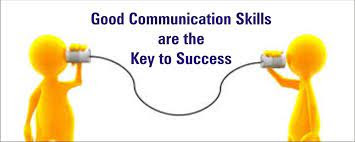A customer success manager’s responsibility goes beyond ensuring that customers are able to use the products and services their company provides. These professionals also play an important role in training customers to optimize the benefits of these offerings, serving as liaisons between clients and other employees, and building relationships that will lead to long-term, mutually beneficial business partnerships. Communication skills are at the heart of everything CSMs do, so it’s important to build strong communication skills if you want to succeed in this role or any other customer-facing role within your organization. Here are six ways you can build effective communication skills as a CSM.
1) Be Open And Vulnerable
When you’re speaking with your customers and prospects, be open and vulnerable. Own up to mistakes and show that you are willing to do what it takes to help them achieve their goals. Showing vulnerability will help your customers trust you, which is a key component of building strong relationships.
2) Use Plain Language
Whether you’re delivering good news or bad, using plain language helps ensure your audience understands what you have to say. After all, if they don’t understand your message—or feel like you’re talking down to them—they aren’t likely to trust that what you have to say is credible. So take care with terminology and write in a manner that appeals not only to people who are familiar with your industry, but also those who aren’t.
3) Communicate What You Mean
The first and most important part of effective communication is making sure that your listener understands what you mean. Be clear and specific when you write an email or speak to someone. Take time to articulate your thoughts into well-structured sentences, no matter how long it takes, so that everyone is on the same page. If you’re not sure if they have understood, ask them directly or send a second email asking for feedback.
4) Watch Body Language
It’s not what you say, it’s how you say it. Effective communication isn’t just about speaking—it’s also about paying attention to what people are saying and how they are saying it. Before responding to a customer or colleague, take a moment to watch body language and be mindful of non-verbal cues that may affect your understanding of what is being said and how you react to it.
5) Use The Right Medium For The Message
When choosing a medium for a message, understand your audience. Sometimes it’s appropriate to send an email; other times you might opt for a formal letter via snail mail. If you need a sense of urgency in your message, try picking up the phone instead of sending an email.6) Listen Actively
Active listening is a simple but powerful communication tool. It’s about paying attention to what someone else is saying, not just waiting for your turn to talk. When you listen actively, you demonstrate respect and create an environment that encourages open dialogue.
